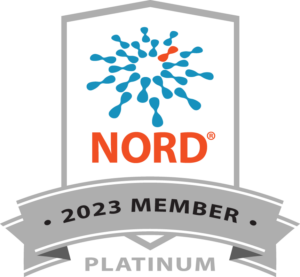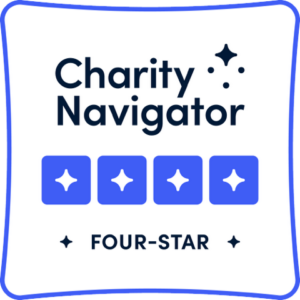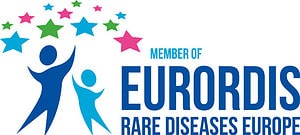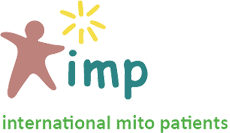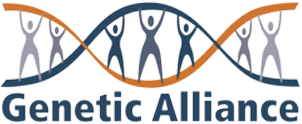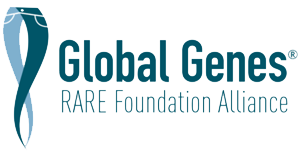General Info for KSS: Kearns-Sayre syndrome
Overview
Kearns-Sayre syndrome, also known as KSS, is a rare mitochondrial condition where a large part of the mitochondrial genome, or set of DNA contained in the mitochondria of a cell, is missing. Mitochondria are parts of a cell that help turn the energy we get from food into energy that the body can use. They are also important in the communication between body parts and creating other materials the body needs. Mitochondrial conditions can cause a variety of signs and symptoms in many parts of the body, particularly those that use a lot of energy like muscles and the brain.
Alternative Names
- KSS
- Kearns Sayre syndrome
- chronic progressive external ophthalmoplegia and myopathy
- chronic progressive external ophthalmoplegia with ragged red fibers
- CPEO with myopathy
- CPEO with ragged red fibers
- mitochondrial cytopathy
- ophthalmoplegia
- pigmentary degeneration of the retina and cardiomyopathy
- ophthalmoplegia plus syndrome
- single large-scale mtDNA deletion syndrome
- SLSMDS
Genetics
Inheritance Type(s)
- De Novo
Cause and Genetics
Most often, KSS is due to a new genetic change in a child. In rare cases it is inherited, meaning it is passed down in a family. Mitochondria are inherited from the mother through her eggs. People typically do not inherit any mitochondria from sperm, making it very unlikely for mitochondrial conditions to be passed down from a father. Both males and females can have KSS.
Frequency
Frequency (Global)
1-3: 100,000
Frequency - More Information
Kearns-Sayre syndrome is thought to affect approximately 1 to 3 people out of 100,000 people
Affected Biological Gender
Both Male and Female
Signs and Symptoms of KSS: Kearns-Sayre syndrome
Kearns-Sayre syndrome causes a range of signs and symptoms. The exact features, onset, and severity can vary widely among people with this condition, even among members of the same family. Always check with your provider if new symptoms appear or you are concerned.
KSS has three hallmark features:
- Onset of symptoms before age 20 years
- A “salt-and–pepper” speckled appearance in the eyes called pigmentary retinopathy. This can affect vision but does not most of the time.
- Progressive external ophthalmoplegia (PEO) that causes a weakness or paralysis of the eye muscles resulting in impaired eye movement and drooping eyelids called ptosis.
Additional signs and symptoms may include:
- A type of heart rhythm difference called cardiac conduction block
- A specific type of loss of movement control that causes problems with coordination, balance, and steadiness when walking called cerebellar ataxia
- High levels of protein in the cerebrospinal fluid which is the fluid surrounding the brain and spinal cord
- Muscle weakness
- Hearing loss
- Kidney problems
- Loss of cognitive function known as dementia
- Shorter height than expected based on family history
- Diabetes is seen occasionally
- Ragged red fibers seen on muscle biopsy
Diagnosis
Kearns-Sayre syndrome can be diagnosed by:
- Measuring biochemical markers in blood and cerebrospinal fluid (the fluid surrounding the brain and spinal cord)
- Brain studies and imaging showing calcium buildup or lesions in certain areas of the brain (CT scan or tomography)
- Heart studies looking for rhythm changes (EKG)
- Eye examination showing pigmentary retinopathy and ptosis
- Muscle biopsy showing ragged red fibers
- Performing a genetic test
Newborn Screening: Recommended Uniform Screening Panel (RUSP)
No
Newborn Screening - More Information
Treatment of KSS: Kearns-Sayre syndrome
Treatment and Management
As of 2022, there is no FDA-approved therapy for KSS. Treatment and management of KSS is symptomatic and supportive. This may include:
Traditional treatment of heart conditions including pacemakers
- Eyelid slings for severe ptosis
- Monitoring and treatment for dry eye
- Hearing aids or cochlear implants for hearing loss
- Hormone replacement
- Physical and occupational therapy
- Avoidance of mitochondrial toxins like certain drugs, tobacco, and alcohol
- Mitochondrial supplements
Type of Specialists and Clinicians
- Audiology
- Cardiology
- Endocrinology
- Gastroenterology
- Nephrology
- Neurology
- Ophthalmology
Resources
- Kearns-Sayre syndrome – About the Disease – The National Institutes of Health
- Kearns Sayre Syndrome – NORD (National Organization for Rare Disorders) – The National Organization for Rare Disorders
Connecting with others impacted by a rare disease allows for vital information to be shared about day-to-day life, prevents isolation, and gives hope. Please contact MitoAction for peer support opportunities at 888-MITO-411 or email mito411@mitoaction.org.
Other resources we recommend are:
Download the KSS: Kearns-Sayre syndrome Fact Sheet (PDF)
MitoAction does not provide medical advice, diagnosis, treatment, or legal advice. It is essential that all those living with or caring for someone with a Mitochondrial or FAOD disease have an emergency protocol letter. These letters, which are written and signed by a doctor, share details about prescribed treatment during crises and in emergency room settings. Always check with your doctor if you or your child has concerns as everyone may present with symptoms differently. Before beginning any treatment or therapy, please consult with your physician.
Last Updated: 11/15/2022



